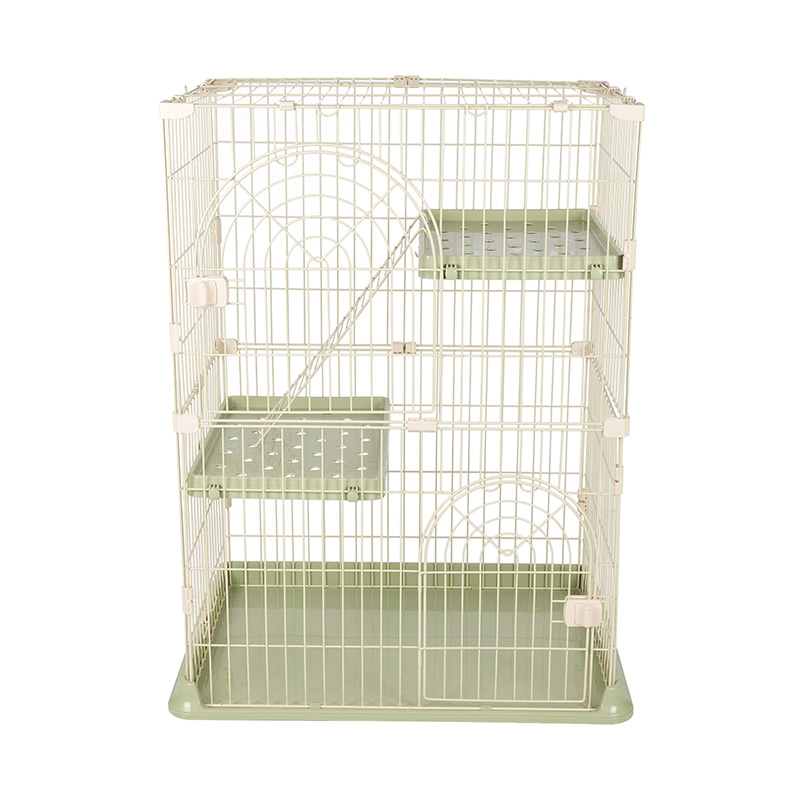The design of small pet cages is a complex and important issue in terms of aesthetics and practicality. It requires balancing the health needs of pets, the aesthetic preferences of owners, and the convenience of actual use.
1. Core elements of aesthetics and practicality
(1) Aesthetics
Visual appeal: The appearance of the pet cage should conform to modern aesthetic trends, such as minimalist style, natural style, or personalized design.
Color and material: Choose soft colors (such as white, wood color, gray) and high-quality materials (such as metal, wood, transparent plastic) to make the pet cage blend into the home environment.
Decorative elements: Enhance the artistic sense of the pet cage by adding carvings, patterns or unique shapes.
(2) Practicality
Functional layout: The pet cage must meet the basic living needs of the pet, including activity space, eating area, excretion area, etc.
Easy to clean: The design should be easy to clean and reduce the maintenance burden of the pet owner.
Safety: Make sure the pet cage is structurally sound and has no sharp edges or potential hazards.
2. Design strategies that take into account both aesthetics and practicality
(1) Modular design
Concept: Divide the pet cage into multiple functional modules (such as sleeping area, activity area, and eating area), each of which can be adjusted or replaced independently.
Advantages:
Aesthetics: Modular design can create a personalized appearance by matching modules of different colors or materials.
Practicality: Modular design is easy to clean, repair, and upgrade, meeting the needs of pets' growth or seasonal changes.
(2) Multi-layer structure
Concept: Multi-layer design is adopted to make full use of vertical space and provide more activity areas for pets.
Advantages:
Aesthetics: Multi-layer structure has a more layered feel and is suitable for modern home style.
Practicality: It increases the activity space for pets while saving floor space.
(3) Hidden functional design
Concept: Design functional components (such as food troughs, water bottles, and trays) as hidden or embedded.
Advantages:
Aesthetics: Hidden design reduces exposed components and makes the cage look neater.
Practicality: Hidden functional parts are not easily knocked over or damaged by pets, which improves the convenience of use.
(4) Integration of natural elements
Concept: Add natural elements to the cage design, such as wooden frames, artificial plants or natural stone decorations.
Advantages:
Aesthetics: Natural elements can create a warm and harmonious atmosphere and complement the home environment.
Practicality: Wood materials have good thermal insulation and environmental protection, and are also more durable.
(5) Use of transparent materials
Concept: Use transparent plastic or glass as part of the cage material to enhance the visual transparency.
Advantages:
Aesthetics: Transparent materials make the pet cage look lighter and more fashionable, making it easier to observe the pet's activities.
Practicality: Transparent materials make it convenient for pet owners to check the status of their pets at any time, while reducing the pet's sense of enclosure.
This balance not only reflects the designer's ingenuity, but also creates a better living environment for pets and owners.


 English
English Español
Español



